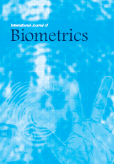
International Journal of Biometrics
Scope & Guideline
Transforming Data into Identity: The Biometrics Journal
Introduction
Aims and Scopes
- Biometric Recognition Techniques:
The journal covers a wide range of biometric recognition techniques, including facial recognition, fingerprint analysis, iris recognition, and multimodal biometrics. These techniques leverage advanced algorithms and machine learning methods to improve accuracy and reliability in identification and verification processes. - Emotion and Behavior Recognition:
There is a significant focus on recognizing emotions and behaviors, particularly in sports contexts. Research in this area explores the use of deep learning and multimodal data fusion to detect emotional states and actions of athletes, contributing to performance analysis and mental health monitoring. - Security and Authentication Systems:
The journal addresses security issues related to biometric systems, including user authentication and data protection. This encompasses various methodologies such as keystroke dynamics, signature verification, and liveness detection, aiming to enhance the security aspects of biometric identification. - Machine Learning and AI Applications:
A core theme in the journal is the application of machine learning and artificial intelligence in biometric systems. This includes the development of novel algorithms, deep learning architectures, and optimization techniques that enhance recognition performance and system robustness. - Human-Computer Interaction:
The journal explores the intersection of biometrics and human-computer interaction, focusing on how biometric systems can be designed to improve user experience and accessibility, while also addressing ethical considerations in biometric data usage.
Trending and Emerging
- Multimodal Biometrics:
There is a notable trend towards multimodal biometric systems that integrate multiple types of biometric data (e.g., facial recognition, voice, and behavioral patterns) to enhance accuracy and reliability. This approach is gaining traction as it addresses the limitations of single-modality systems. - Deep Learning and Neural Networks:
Deep learning, particularly convolutional neural networks (CNNs) and transformer models, is increasingly being applied to various biometric recognition tasks. This trend reflects the broader shift in technology towards leveraging large datasets and complex architectures to achieve superior performance in recognition tasks. - Emotion Recognition in Sports:
Research focusing on emotion recognition, particularly in sports contexts, is on the rise. This area is crucial for understanding athlete performance and mental well-being, highlighting the interplay between emotional states and physical actions. - Security Enhancements in Biometric Systems:
With growing concerns about data privacy and security, there is an emerging emphasis on improving the security of biometric systems. This includes developing methods for liveness detection and anti-spoofing techniques, ensuring that biometric identifiers are robust against fraudulent use. - Human-Centric Biometric Applications:
A trend towards more human-centric applications of biometrics is evident, emphasizing the importance of user experience and ethical considerations in biometric system design. This includes research on how to make biometric systems more accessible and user-friendly.
Declining or Waning
- Traditional Biometric Methods:
There appears to be a declining interest in traditional biometric methods that do not incorporate advanced machine learning techniques. Research on basic fingerprint and facial recognition methods without the application of deep learning or complex algorithms is becoming less frequent, as the field moves towards more sophisticated approaches. - Physical Biometric Traits:
The focus on physical traits such as palm or foot biometrics has diminished, with researchers favoring more dynamic and behavior-oriented recognition methods. This shift may indicate a growing interest in recognizing individuals based on their actions or emotional states rather than solely on static physical characteristics. - Static Image Processing Techniques:
Research that primarily relies on static image processing techniques for biometric recognition is waning. The trend is moving towards more adaptive and real-time processing methods, reflecting the demand for systems that can operate in dynamic environments.
Similar Journals
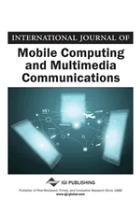
International Journal of Mobile Computing and Multimedia Communications
Bridging Technology and Connectivity for TomorrowThe International Journal of Mobile Computing and Multimedia Communications, published by IGI Global, stands at the intersection of technology and connectivity, addressing the critical advancements in mobile computing and multimedia communications. With an ISSN of 1937-9412, this journal provides a platform for the dissemination of innovative research findings and insights, fostering collaboration and communication among researchers, professionals, and students within the field. Although currently indexed in the Q4 quartile for 2023 in Computer Networks and Communications, its rich archive of articles from 2009 to 2014 and 2016 to 2024 reflects the journal's ongoing commitment to exploring emerging trends, technologies, and methodologies that shape the future of mobile computing. While it is not an open-access journal, the high-quality research published here is crucial for advancing academic discourse and practical applications in an increasingly digital world. By encouraging submissions across a wide range of topics, International Journal of Mobile Computing and Multimedia Communications continues to enhance its reputation as a pivotal resource for scholars and industry experts alike.

International Arab Journal of Information Technology
Catalyzing Ideas for the Next Generation of TechnologyWelcome to the International Arab Journal of Information Technology, a prestigious publication under the aegis of ZARKA PRIVATE UNIVERSITY in Jordan, dedicated to advancing the field of Information Technology. First established in 2008, this journal has made significant strides in disseminating high-quality research, achieving an impressive Q2 ranking in Computer Science (miscellaneous) and securing a notable 57th percentile position in the Scopus rankings. With a comprehensive scope encompassing various sub-disciplines of computer science, the journal is committed to promoting scholarly dialogue and innovation among researchers, professionals, and students. While currently operating as a subscription-only journal, it remains a vital resource for the academic community seeking to explore the latest trends and advancements in technology. The International Arab Journal of Information Technology is not only a platform for original research but also a vibrant hub for ideas that shape the technological landscape of the Arab region and beyond.

CAAI Transactions on Intelligence Technology
Catalyzing Collaboration in Intelligent Technology ResearchCAAI Transactions on Intelligence Technology is a premier peer-reviewed journal published by WILEY, dedicated to advancing the fields of Artificial Intelligence, Computer Networks and Communications, Computer Vision and Pattern Recognition, Human-Computer Interaction, and Information Systems. Since its inception in 2017, this Open Access journal has rapidly ascended the ranks, achieving Q1 quartile status across multiple categories as of 2023, and is recognized for its rigorous standards and innovative research dissemination, evidenced by impressive Scopus rankings, including Rank #12 in Computer Vision and Pattern Recognition. Through its commitment to providing a platform for high-quality research, the journal invites contributions from scholars globally, fostering a collaborative environment that stimulates intellectual exchange and encourages advancements in intelligent technology. Addressed to researchers, professionals, and students alike, CAAI Transactions on Intelligence Technology serves as a vital resource for those aiming to stay at the forefront of technological innovation.
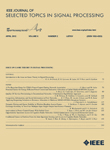
IEEE Journal of Selected Topics in Signal Processing
Transforming Ideas into Impactful Signal Processing SolutionsIEEE Journal of Selected Topics in Signal Processing is a premier academic publication dedicated to the advancement of knowledge in the field of signal processing. Published by IEEE-INST ELECTRICAL ELECTRONICS ENGINEERS INC, the journal boasts an impressive impact factor that places it in the top tier of its category; ranked Q1 in both Electrical and Electronic Engineering and Signal Processing for 2023. Given its esteemed standing, the journal serves as a vital resource for researchers, professionals, and students alike, providing cutting-edge insights and developments that shape the future of signal processing. The journal encompasses a wide array of topics relevant to the evolving landscapes of electrical engineering and computer science, with particular significance in innovative applications and methodologies. As a platform for disseminating high-quality research, this journal remains essential for those seeking to stay at the forefront of this dynamic field. You can explore the latest contributions and findings, benefiting from the journal's influential status in the realm of signal processing.

Frontiers in Signal Processing
Advancing Knowledge, Transforming ApplicationsFrontiers in Signal Processing is a pioneering open access journal published by FRONTIERS MEDIA SA that has been a key player in the field of signal processing since its launch in 2021. With an E-ISSN of 2673-8198, this journal aims to foster innovative research and contribute to advancements in various signal processing applications, from audio and image processing to telecommunications and biometrics. As a platform for researchers, professionals, and students, it provides a rigorous peer-review process along with wide dissemination of high-quality articles, making groundbreaking findings freely accessible to a global audience. The journal’s commitment to open access ensures that knowledge is not confined by paywalls, thereby empowering the scientific community to accelerate discovery and learning. With a comprehensive scope that encompasses theoretical insights and practical applications, Frontiers in Signal Processing is poised to play a vital role in shaping future developments in this dynamic field.

MULTIMEDIA TOOLS AND APPLICATIONS
Pioneering insights in multimedia tools and their applications.MULTIMEDIA TOOLS AND APPLICATIONS, published by Springer, is a highly regarded journal in the fields of Computer Networks and Communications, Hardware and Architecture, Media Technology, and Software. Since its inception in 1995, this journal has established itself as a vital platform for disseminating innovative research and developments, maintaining a prominent position evidenced by its Q2 and Q1 rankings across various categories as of 2023. With an ISSN of 1380-7501 and an E-ISSN of 1573-7721, it continues to attract high-quality contributions from scholars and practitioners worldwide. Although it does not currently offer Open Access options, its impact is reflected in impressive Scopus rankings, placing it in the top quartiles in multiple categories, including a remarkable 10th rank in Media Technology. As the field evolves rapidly, the journal’s objectives encompass advancing multimedia technologies and exploring their multifaceted applications, making it an essential resource for researchers, professionals, and students seeking to stay at the forefront of this dynamic discipline. For more information, visit the journal's page to explore recent publications and submission guidelines.

Jordanian Journal of Computers and Information Technology
Championing Open Access for Groundbreaking Technological DiscoveriesJordanian Journal of Computers and Information Technology, published by Princess Sumaya University and SRSF, stands as a significant platform for scholarly research in the realm of computer science, particularly in topics related to emerging technologies and information systems. With its Open Access model initiated in 2015, the journal facilitates global access to high-quality research findings, embodying the principles of knowledge sharing and academic collaboration. The journal's ranking in the Q3 category of Computer Science (miscellaneous) and its placement in the 54th percentile of Scopus' General Computer Science rankings underscore its growing reputation among researchers and professionals alike. Situated in Amman, Jordan, the journal actively contributes to the regional and international discourse on computing methodologies, applications, and innovations, making it an indispensable resource for scholars seeking to advance their understanding and engage with contemporary issues in technology.
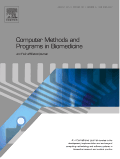
Computer Methods and Programs in Biomedicine
Empowering Biomedical Research through Advanced Computer Applications.Computer Methods and Programs in Biomedicine, published by ELSEVIER IRELAND LTD, is a leading journal at the intersection of computer science and biomedical research. With an impressive impact factor evidenced by its Q1 rankings in multiple categories—Computer Science Applications, Health Informatics, and Software—this journal ranks highly among peer publications, showcasing its significance in advancing interdisciplinary research. Covering a wide array of topics since its inception in 1985, it is particularly crucial for those invested in the innovation of computational methods applied to the biomedical field. The journal has established a strong reputation, with Scopus rankings placing it in the top percentiles across its relevant sectors, including the 14th position out of 138 in Health Informatics. Researchers, practitioners, and students looking to explore current trends, methodologies, and advancements in biomedical applications of computer science will find this journal an invaluable resource.
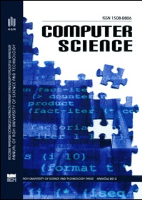
Computer Science-AGH
Unlocking Potential Through Open Knowledge SharingComputer Science-AGH, published by the AGH University of Science & Technology Press in Poland, is an esteemed open access journal that has been disseminating high-quality research since 2004. With ISSN 1508-2806 and E-ISSN 2300-7036, this journal focuses on a diverse range of areas within the computer science discipline, including but not limited to Artificial Intelligence, Computational Theory, Computer Graphics, and Networks. While it currently holds a Q4 ranking across several categories as of 2023, it actively promotes research that contributes to the academic community's understanding and evolution in the field. The journal's commitment to open access ensures that vital research is accessible to a wider audience, fostering collaboration and innovation. With its comprehensive focus and strategic publication goals, Computer Science-AGH plays a crucial role in advancing the frontiers of computer science research and education, making it an invaluable resource for researchers, professionals, and students alike.
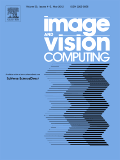
IMAGE AND VISION COMPUTING
Advancing visual technology through innovative research.Image and Vision Computing, published by Elsevier, serves as a leading international journal focused on the dynamic fields of computer vision, pattern recognition, and signal processing. With its esteemed Q1 category rankings in these areas and an impressive standing in Scopus metrics, where it ranks 19th in Computer Vision and 23rd in Signal Processing, this journal has firmly positioned itself at the forefront of academic research and innovation. Established in 1983, it continues to publish cutting-edge research that drives advancements in technology and applications across various domains. The journal is committed to disseminating high-quality, peer-reviewed articles that address significant challenges and propose novel solutions, making it an essential resource for researchers, practitioners, and students alike. While not an open access journal, Image and Vision Computing offers a wealth of valuable insights into the ever-evolving landscape of visual computing technologies.